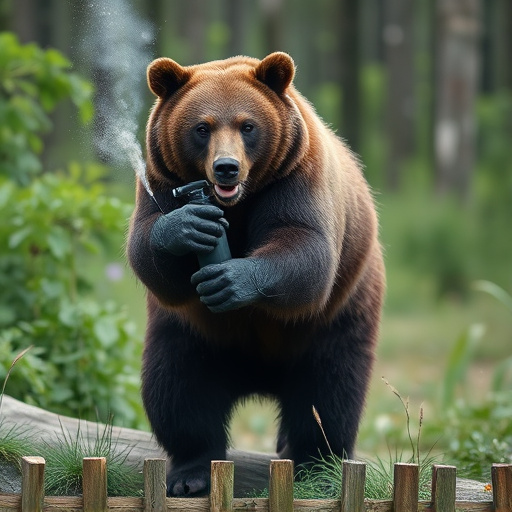Understanding bear behavior is key for safety in areas with bears. Bear spray, an effective defense against charging grizzlies, disrupts senses but may not stop all attacks due to variables like wind and coat thickness. Combining bear spray with knowledge of bear behavior and alternative defenses improves safety when facing a grizzly. Bear Spray Vs Charging Grizzly effectiveness varies, so knowing how to respond if spray fails is crucial for survival.
“Exploring outdoor safety in bear country? Understanding aggressive bear behavior is paramount. This comprehensive guide delves into the intricacies of bear interactions, focusing on effective deterrents like bear spray and the rare but critical scenario of charging grizzlies. We debunk myths about bear spray’s effectiveness and offer insights into self-defense strategies. By understanding these key aspects, you’ll enhance your safety in the great outdoors, whether hiking or camping.”
- Understanding Bear Behavior: Key to Safety
- Bear Spray: Effective Deterrent or Misconception?
- Charging Grizzlies: When Spray Fails and Self-Defense Matters
Understanding Bear Behavior: Key to Safety
Understanding bear behavior is crucial for safety in outdoor spaces where bears roam. Bears are typically solitary animals, preferring to avoid human interaction. However, certain situations can trigger aggressive responses. For instance, a mother bear protecting her cubs or an animal feeling threatened when approached too closely. Knowing these triggers is key to preventing dangerous encounters.
When it comes to defense mechanisms, bear spray has proven effective against charging grizzlies. It creates a barrier of irritants that disrupt the bear’s sense of smell and vision, allowing potential victims to escape. However, proper usage is essential; canisters should be aimed at the bear’s face and eyes from a safe distance. Understanding these dynamics empowers individuals to make informed decisions while outdoors in bear country, enhancing their chances of encountering these majestic creatures responsibly and safely.
Bear Spray: Effective Deterrent or Misconception?
Bear spray has long been touted as an effective deterrent against aggressive bears, especially grizzlies known for their charging behavior. However, the effectiveness of bear spray is a topic of debate among experts and outdoor enthusiasts. When comparing bear spray to a charging grizzly bear, it’s crucial to understand the mechanics behind each.
Bear spray works by releasing a stream of capsaicin-based solution into the bear’s eyes and face, temporarily blinding and irritating them. This disruption can give an individual valuable time to escape or climb a tree. However, research suggests that grizzly bears have a thick coat and may not be as susceptible to the effects of bear spray as smaller bear species. In addition, factors like wind direction and distance from the bear can significantly impact the spray’s effectiveness. Therefore, while bear spray can be a useful tool in certain situations, it should not be solely relied upon as a foolproof defense against an aggressive grizzly bear charging directly towards you.
Charging Grizzlies: When Spray Fails and Self-Defense Matters
When facing a charging grizzly bear, the effectiveness of bear spray as a deterrent can be debated. Many outdoor enthusiasts rely on this aerosol defense, but it’s crucial to understand its limitations. Bear spray is designed to create a temporary blind spot by irritating the bear’s eyes and nasal passage, allowing you time to escape or climb a tree. However, in aggressive cases, especially with grizzlies known for their powerful charges, spray may not always be enough.
In such scenarios, self-defense becomes paramount. Knowing how to respond when spray fails is essential. This might involve using any available object as a barrier—a backpack, a stick, or even your hands—to protect vital areas like the face and neck. The key is to remain calm, back away slowly if possible, and fight only as a last resort. Understanding bear behavior and being prepared with both bear spray and alternative defense mechanisms can significantly enhance your safety in bear country.
Understanding bear behavior and knowing when bear spray might not be enough is crucial for outdoor safety. While bear spray has proven effective as a deterrent, facing an aggressive charging grizzly requires alternative self-defense strategies. By recognizing the signs of potential danger and learning how to respond, hikers and campers can better navigate encounters with these majestic yet unpredictable animals, ensuring their safety in bear country.
